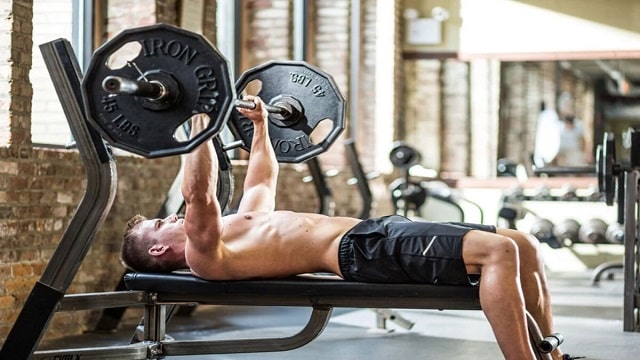Physical exercise is full of advantages and benefits for our health and more and more people have committed to having a weekly routine to get fit and tone their muscles. Among the different exercises that we can find when going to the gym, there are some that promote resistance, such as cardio, others that activate the whole body such as planks or some more focused, such as weights. Within the latter, we must know which part we are interested in working on in order to do the most convenient exercises.
In this sense, if one of your goals is to be able to gain muscle and strength in the pectoral area and raise your muscles to keep them smooth for as long as possible, one of the most classic but most effective exercises is the bench press. In this new article, we will tell you everything you need to know about how to bench press, which muscles are involved and the mistakes that must be taken into account to avoid injuries.
Table Of Content
1. How to bench press step by step
2. What muscles work on the bench press?
3. Common mistakes when doing the bench press
How to bench press step by step
To be able to do the bench press correctly, you will need a surface where you can support the entire area of your back and head, leaving your feet flat on the ground and forming a 90-degree angle with your knees. When you are in this position, you must follow the following steps:
- Place your hands at shoulder height and, with firm and straight wrists, hold the bar with the weight that corresponds to you.
- Take a deep breath and, engaging your shoulders, back, and glutes, lift the barbell off the hook and, exhaling deeply, carefully place the weight on your pecs, under your nipples, controlling the weight.
- Perform the press exercise, make up and down movements.
- Raise the weight with explosive force, we must fix the shoulder blades and keep the body stable and firm.
- Lower the weight in a controlled manner and mark the position without letting the weight overcome your chest.
- Maintain a conscious breath during inhalations, exerting explosive force and during exhalations, activating the abdomen and distributing the tension to the feet.
We recommend trying the incline bench press. You will add a variant to this exercise that will help you make it more enjoyable and interesting. It is simply a matter of tilting the bench and following the same steps as this bench press exercise.
If you want to continue with your arm routine and are looking for an interesting variation on the barbell bench press, we recommend that you read our article How to do the French bench press correctly.
What muscles work on the bench press?
Despite the fact that when it comes to raising and lowering the bar, the arms are the main ones involved in the barbell bench press exercise, there are many other muscles that are involved in these movements and that will help the rest of the body to maintain the barbell. way without risk of injury. All of them are responsible for stabilizing, moving and maintaining the execution of the press effectively and safely. These are the muscles that are worked in the barbell bench press exercise:
Common mistakes when doing the bench press
The barbell bench press is quite a demanding exercise and, until you master the technique, you must be careful when doing it so as not to end up suffering some type of injury. That is why, if it is the first time you do it, you should consider the mistakes that are made most frequently:
- The initial posture. It is very important to keep your back straight and the soles of your feet flat on the ground at all times in order to exercise strength and resistance well and not overload your lower back and shoulders.
- The gaze should always go in the direction of the bar to avoid moving the neck and wrists straight and firm to avoid tendonitis, they should not be forward or backward.
- Breathing is essential to this exercise and must be done correctly. If we forget to breathe or do the movements with inverted breathing, we will be making the exercise difficult and risking harm to ourselves. It should be raised with inhalation and lowered with exhalation, with an interval of three seconds for each.
- The space between the shoulders. To prevent the elbows from being too open or overloading the pecs, it is important to set the correct distance between the hands and the shoulders when gripping the bar. The elbows should never exceed 45 degrees with the rest of the arm to achieve a correct balance.
